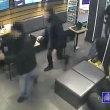Wandsworth Council closed a Kent school on Monday after years of claiming to fight for its survival. But Cabinet transcripts, council minutes, and documents from both sides reveal a tale of procedural manipulation, selective amnesia, and institutional self-interest dressed up as concern for vulnerable children. Everyone insisted they cared. The evidence suggests otherwise.
On Monday afternoon, Wandsworth Council’s Cabinet voted to close Bradstow School, a specialist facility in Kent serving children with severe autism and complex needs. The case seemed watertight: only one Wandsworth child attends, Kent County Council owes £4.6 million and refuses to take over the school, the deficit will hit £1 million by year-end.
“Hand on heart, I cannot recommend to Cabinet that we keep underwriting Bradstow’s losses,” said Councillor Judi Gasser. “My responsibility is to Wandsworth children.” Years of failed negotiations. Two failed attempts to turn it into an academy. “This isn’t the outcome that anyone wanted to see.”
A difficult decision. Carefully considered. Reluctant but necessary.
Then you read the documents and watch the meetings and the whole narrative unravels.
The things Cabinet didn’t mention
The 3 November Cabinet discussion lasted roughly 20 minutes. Wandsworth councillors expressed shock at Kent Council’s behaviour, sympathy for staff facing redundancy, and resolve to do right by Wandsworth taxpayers.
Councillor Aydin Dikerdem asked about supporting the staff during the transition. There are around 100 staff, Gasser told him, noting: “They’re a very well-regarded, highly committed, experienced team, very well trained.”
Dikerdem’s question sounded compassionate. But pause at the answer: 100 staff for 12 children. That’s not a ratio suggesting excellent specialised care. That’s a ratio suggesting an institution that couldn’t maintain enrolment while carrying catastrophic overhead.
Documents reveal why. Student numbers collapsed from 32 in January to 12 by November – a 62% decline in ten months. The school had massive fixed costs designed for a much larger student body. But there’s a darker reason for that ratio. Staff reviews paint a picture of chaos: “Chronic understaffing and high turnover rates mean employees are overburdened and vulnerable, often left as the sole core staff member amidst a sea of agency workers.”
The 100 staff included huge numbers of temporary agency workers covering for permanent staff who kept leaving. It wasn’t generous staffing. It was a collapsing institution burning through people.
What Cabinet also didn’t hear or consider: Two years earlier, in October 2023, Ofsted downgraded the school’s residential care to “Requires Improvement” and issued a restriction of accommodation notice preventing new residential pupils. Inspectors found unsafe medication administration, questionable use of restraint, poor record-keeping, and inadequate supervision.
Six months before Monday’s meeting, in May 2024, Kent County Council had sent parents a confidential letter listing “11 separate ongoing concerns” including matters that involved the police. Kent was “making parallel plans” to potentially remove children to safer places – not because of money, but because of safety.
The truth is that an institution run by Wandsworth Council far outside its borders was a mess. And the council was responsible for that mess.
The “well-regarded, highly committed” staff that Gasser praised has been surveyed by the GMB Union: 85% had no confidence in management, 92% had been injured by pupils, 96% witnessed violent incidents, 83% wanted industrial action. Staff reviews described a “harrowing environment” and “toxic culture” where employees felt like “prison wardens.”
The GMB Union wasn’t calling for redundancy support – they were calling for the headteacher and deputy head to resign. But at the Wandsworth Council Cabinet meeting, these were just professionals needing help with their CVs.

The debt that keeps growing
Councillor Graeme Henderson expressed shock at Kent’s debt: “I am quite staggered at the amount of debt that has been built up. I mean particularly in relation to Kent County Council. This is a school in their county and the value owed, what, 4.2 million, is frankly outrageous.”
What Henderson apparently didn’t know is that Kent’s position is there’s “no legal basis” for the debt claim. Wandsworth dropped a case for reimbursement back in August 2024 and Kent “regards the matter closed.” What’s more, just nine months earlier, the debt had been cited by Wandsworth council as £1.2 million. But by the time it reached Cabinet, it had somehow nearly quadrupled. Kent “owes us £4.6 million,” said Cllr Gasser.
Documents reveal that debt encompasses base fees, inflationary uplifts Kent refused to accept without prior agreement, and additional support costs Wandsworth claims were necessary but Kent argues were never authorised.
The language of institutional closure
When it came to the decision to close the school, Gasser spoke from personal experience. She has worked in special needs. She has a child with special needs. When she said “I feel for the families,” there’s no reason to doubt she meant it. These decisions take a toll on the people making them.
Director of Children’s Services Ana Popovici followed with remarks that echoed the gravity of the moment. “Dear leader, cabinet members, for decades Bradstow School has been a beacon of specialist care and education, a lifeline for many children… Today we, however, must confront a very, very difficult truth.”
She praised the staff’s “integrity and passion and mountains of tenacity.” She acknowledged “this decision is a heavy one.” She promised “the needs of the children remain absolutely at the center of our collective actions.”
The language was nearly identical to what she’d said six months earlier when Wandsworth closed St Anne’s Primary School in May: “I want to start by thanking the governors, the head teacher, our colleagues in the school… for their bravery and unwavering commitment to do what’s right even when that decision is difficult, emotional… It’s crucial that the decision on the future of the school is made in the interest of the pupils.”
This isn’t about questioning anyone’s sincerity. It’s about recognising that institutional closures follow predictable patterns. The same phrases recur: difficult decision, children’s best interests, explored all options, heavy hearts, reluctant last resort.
But then there’s the timeline.
Documents show Wandsworth has been trying to close Bradstow since at least 2021- four years ago. Negotiations with Kent to transfer the school began November 2021. Legal action to collect debt was initiated February 2024. The informal consultation started January 2025. In February, when the political opposition in Wandsworth tried to force a debate, Labour voted down the motion along party lines, prompting the opposition to walk out.
The school business manager, Polly Bunton, made her own plea to Cabinet: “Today you have a choice: to close the door on a school that could still thrive, or to grant the time needed to make an informed decision about academisation.”
Cabinet voted to close it.
The gap between the language – reluctant, last resort, explored all options – and the four-year timeline of closure attempts is what raises questions. Not whether individuals felt genuine emotion, but whether “we did everything we could” accurately describes what the documents show.
The meeting that never happened
Another thing Cabinet didn’t mention: on 5 February 2025, a 1,700-signature petition to save Bradstow was presented to Wandsworth’s full Council. The opposition had prepared a motion to debate but it never happened.
The Mayor placed it at the very end of the agenda – after “items for information” – where Standing Orders allow a time limit to cut off debate before reaching it. The opposition spotted the manoeuvre. Councillor Sutters challenged it: “The debate on Bradstow School will be timed out when the administration brings down the guillotine.”
The opposition proposed a compromise: take the motion after decisions but before information items – that way the issue will get debate time but only after all the business of council had been dealt with. The Labour majority didn’t want any debate on Bradstow School at all, and – after some argument about whether it even needed a vote – voted the compromise down along party lines: 21 for, 30 against, zero abstentions.
The opposition exploded: “Over the last 18 months the Labour group have repeatedly either abused the rules to stop us raising matters on behalf of residents… Tonight they have burned the rule book to stop us debating a serious issue about Bradstow school. This is a sham meeting.”
The entire Conservative opposition walked out. When the Bradstow motion came up at the end, no one was there to propose it. It was ruled “abandoned for lack of proposer.”
Then Councillor Stock gave a speech about Bradstow anyway – to an empty opposition bench. In it, she said: “No decision has been taken… We currently are in the pre-consultation informal stage… We continue to explore with the school all options available to try and make the school financially viable.”
That was February. By November, it was closed. The battle wasn’t mentioned in Gasser’s presentation.

Kent’s convenient silence
Kent was offered free ownership of the entire 14-acre site by Wandsworth. Kent refused, citing buildings “unfit for any type of school” as well as ongoing police investigations.
Except Kent had been placing children in those “unfit” buildings for years. And Kent’s confidential May 2024 letter to parents revealed the authority was already planning to remove its children due to safety concerns – five months before the closure was announced.
Kent knew the school had problems, continued placing children there, then used those problems to justify refusing takeover.
And Kent Council conducted the entire decision behind closed doors. No cabinet papers. No committee debates. No public minutes. Just spokesperson statements to journalists. When local MP Polly Billington ran a petition that gathered 1,000 signatures, Kent didn’t engage. An ePetition on Kent’s own website gathered 47 signatures and expired without response.
Wandsworth at least conducted its decision through public Cabinet meetings. Kent didn’t bother.
The school that could still be saved (except)
Bradstow business manager Polly Bunton pleaded to Wandsworth: “Had the school been allowed to take pupils this year, the financial picture would look very different. With the cost reductions already delivered, we would now be financially viable.”
The school had cut costs by £2.5 million. Whether that would have been enough is unknowable. But Wandsworth had already taken an active decision to make recovery impossible. Documents state: “Although we recognise that Bradstow has been approached by local authorities for new placements… it would not be appropriate to allow these additional admissions.”
Other councils wanted to place children at the school but Wandsworth said no – because it would be “unsettling” if children had to transition again at term end.
Blocking admissions ensured an enrolment collapse (32 to 12 students in ten months), which then proved the school wasn’t financially viable, which justified closure. A bureaucratic trap that also wasn’t mentioned at Cabinet.

What actually happened
Strip away the spin: In 1990, Wandsworth inherited a specialist school in Kent – 80 miles away in the most Eastern part of the county and touching the North Sea – that served primarily Kent children.
This structural absurdity limped along for 35 years until enrolment began falling as best practices evolved toward local placements.
The school developed serious operational problems. Kent didn’t want to pay fees that were increasing without their agreement. Wandsworth claimed Kent was dodging obligations. It was a contract dispute complicated by poor documentation and institutional distrust.
Kent calculated that taking over meant inheriting £500,000 in repairs, ongoing investigations, massive losses, and 100 staff – while already under a government Improvement Order for failing its own SEND provision. They refused.
Wandsworth calculated it couldn’t subsidise a Kent school with one Wandsworth child while Kent disputed millions in debt. They decided to close it.
But neither wanted to be seen abandoning vulnerable children. So Wandsworth spent years “exploring alternatives” while making procedural choices ensuring those alternatives would fail. Kent maintained opacity. The opposition tried to force debate. Wandsworth blocked it while claiming openness.
When Cabinet voted, members either weren’t told or didn’t discuss safeguarding concerns that would complicate the “protecting taxpayers” narrative.
Everyone acted in institutional self-interest while claiming to act in children’s interests. It took four years of manoeuvring to reach a decision that was probably inevitable from the start.
The children nobody saved
While adults argued procedures and money, enrolment collapsed from 32 to 12 students. One parent reported being offered a placement in Birmingham: 4 to 5 hours away.
The school closes December 31, 2025. Kent says it’s “working to find alternative provision” but hasn’t detailed what that means. Some children were rejected by eight schools before Bradstow accepted them. They will face that experience again.
Everyone will continue believing their version was correct and they acted in the children’s best interests. They cannot all be right.
The thread
When institutions face difficult decisions with no good options, they choose performative process over honest reckoning. It’s easier to provide emotional speeches than admit institutional self-interest. Easier to manipulate procedures than acknowledge avoiding scrutiny. Easier to blame the other council than admit you both got stuck.
Bradstow didn’t close because of unpaid debt, unfit buildings, or failed academisation. Those were symptoms. It closed because two councils got stuck with a problem neither wanted to solve, and both decided it was easier to perform concern while manoeuvring toward closure than to admit the simple truth: they wanted it gone, and the children were never the priority.
The 3 November Cabinet meeting was the final performance in a four-year play. The audience was never supposed to see the rehearsals.
But the documents survive.
This article is based on the transcript of the 3 November 2025 Wandsworth Cabinet meeting, video from the 5 February 2025 full Council meeting, consultation documents from both councils, Ofsted reports, GMB materials, and Kent media coverage. The school closes December 31, 2025.










